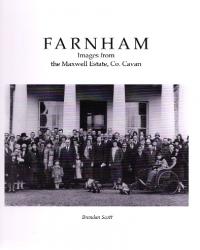Bookworm
Published in Book Reviews, Issue 2(March/April 2011), Reviews, Volume 19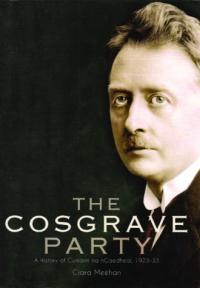 Remember the furore a few years back when Minister for Education Mary Hanafin decreed that every school in the state receive, at taxpayers’ expense, a copy of the Royal Irish Academy’s Judging Dev by Diarmaid Ferriter? (God be with the days when such largesse was flung around like snuff at a wake!) Would biographies of Dev’s opponents—say, W.T. Cosgrave—be afforded the same treatment, critics wondered? The RIA has continued its ‘judging’ series but not on Cosgrave. It has, however, come close with Ciara Meehan’s The Cosgrave party: a history of Cumann na nGaedheal, 1923–33 (311pp, €30, ISBN 9781904890652), which conforms to the high design standards set by the RIA’s recent publications. The author makes the point that the party was very much ‘top-down’, i.e. set up not to achieve power but by people already in government. But don’t expect to see a copy any time soon in your son or daughter’s schoolbag. The way things are going they’ll be lucky to have pen and paper!
Remember the furore a few years back when Minister for Education Mary Hanafin decreed that every school in the state receive, at taxpayers’ expense, a copy of the Royal Irish Academy’s Judging Dev by Diarmaid Ferriter? (God be with the days when such largesse was flung around like snuff at a wake!) Would biographies of Dev’s opponents—say, W.T. Cosgrave—be afforded the same treatment, critics wondered? The RIA has continued its ‘judging’ series but not on Cosgrave. It has, however, come close with Ciara Meehan’s The Cosgrave party: a history of Cumann na nGaedheal, 1923–33 (311pp, €30, ISBN 9781904890652), which conforms to the high design standards set by the RIA’s recent publications. The author makes the point that the party was very much ‘top-down’, i.e. set up not to achieve power but by people already in government. But don’t expect to see a copy any time soon in your son or daughter’s schoolbag. The way things are going they’ll be lucky to have pen and paper!
Cosgrave features too in Paul O’Brien’s Uncommon valour: 1916 & the battle for the South Dublin Union (Mercier Press, 157pp, €12.99, ISBN 9781856356541), the latest in the ongoing crop of 1916-related titles to roll off the presses. Along with Éamonn Ceannt and Cathal Brugha, he commanded the small group of Volunteers who occupied the complex now known as St James’s Hospital, withstood attacks by the Royal Irish Regiment and Sherwood Foresters, and only surrendered when ordered to do so.
Given that Ernie O’Malley is now recognised as the best first-hand writer on the War of Independence and the Civil War, it is hard to credit that in the 1960s and ’70s his son Cormac found it impossible to find an Irish publisher for his father’s various memoirs. Eventually Anvil Books came to the rescue and
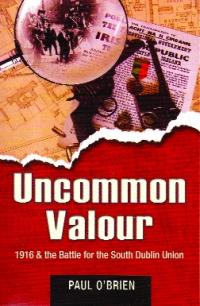 published The singing flame (1978), On another man’s wound (1979) and Raids and rallies (1982). The latter has been republished by Mercier Press (282pp, €14.99, ISBN 9781856357159), who took over the Anvil titles a few years ago. This account of nine War of Independence engagements in which O’Malley was involved—mainly in Tipperary, but also in Clare, Roscommon and Mayo—has been augmented by new material.
published The singing flame (1978), On another man’s wound (1979) and Raids and rallies (1982). The latter has been republished by Mercier Press (282pp, €14.99, ISBN 9781856357159), who took over the Anvil titles a few years ago. This account of nine War of Independence engagements in which O’Malley was involved—mainly in Tipperary, but also in Clare, Roscommon and Mayo—has been augmented by new material.
Margaret Ó hÓgartaigh’s Edward Hay, historian of 1798: Catholic politics in an age of Wolfe Tone and Daniel O’Connell (The History Press, 165pp, €14.99, ISBN 9781845889920) reminds us that the dividing line between the ‘physical force’ and ‘constitutional’ strands of Irish nationalism has not always been clear-cut. Hay, born into a Catholic landed family in Wexford in 1761, made the transition from United Irishman in the 1790s to secretary of Daniel O’Connell’s Catholic Committee/Board/Association between 1806 and 1819; O’Connell described him as ‘a servant of eight million people’.
Anyone lucky enough to have caught Power and privilege: photographs of the Big House in Ireland 1858–1922 in the National Photographic Archive in Dublin’s Temple Bar (exhibition now over, sadly) will be interested in Farnham: images from the Maxwell Estate, Co. Cavan (Wordwell, 99pp, €19, ISBN 9781905569335) by Brendan Scott, more familiar to HI readers as an early modernist. The Maxwells, lowland Scots originally, came to Ireland c. 1600 and within a century had become the most important and wealthiest landowners in County Cavan; in 1756 John Maxwell was created first Baron Farnham (the current one is the thirteenth). Like the Temple Bar exhibition, these are predominantly images of the ‘powerful and privileged’, although there are occasional ones of servants and farm labourers, and many of children. Apart from the quality and content of the images themselves, the captions are
particularly good, giving not just basic information but plenty of
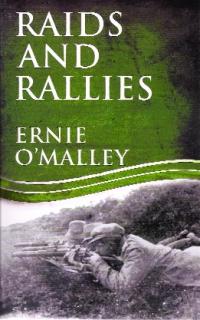 visual analysis as well. The collection on
visual analysis as well. The collection on
which the book is based (400 photographs and 45 glass plates) is currently held by Cavan County Museum.
In the light of the current campaign to encourage people of Irish background in Britain to register their ethnicity (as opposed to their nationality), the publication of a revised, updated and expanded edition of Donald M. MacRaild’s The Irish diaspora in Britain, 1750–1939 (282pp, £19.99, ISBN 9780230240292) is timely. Part of Palgrave’s Social History in Perspective series (general editor Jeremy Black), this looks set to emulate the original publication (1999) and to establish itself as the leading textbook in the field.
Local historical society journals recently submitted for review have been of high production quality (no doubt the result of my previous scoldings!). Two articles in particular in Journal: Skibbereen and District Historical Society/Cumann Staire An Sciobairín is a Cheantar (182pp, €10, ISSN 16496833) caught my eye. In ‘The First World War at sea off West Cork’ Edward J. Bourke points out that the area, on the main shipping lane from America to southern English ports, was a major theatre in the war at sea. In ‘IRA sectarianism in Skibbereen?’ Jasper Ungoed-Thomas gives a nuanced account, including the reminiscences of his Protestant grandfather, eventually concluding in the negative.
Fingal County Libraries have just published Fingal at war, the first of a series of bi-yearly Fingal Studies (89pp, €5, from local Fingal libraries), edited by Joseph Byrne. The three main articles deal with the relationship with the British Army and the Great War, the 1916 Rising, and a local ‘foot-soldier’ Volunteer, John Jack ‘Rover’ McCann. In addition, there are short reviews, an article on the council’s archives and repositories, and an excellent documents-based article by the editor on the Books of Survey and Distribution, 1661–1703, which, along with the Civil and Down Surveys, dealt with the
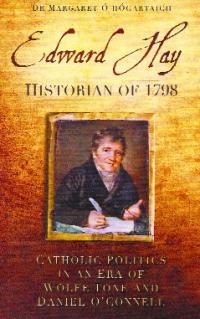 mapping, sequestration and resettlement of Catholic estates forfeited after the rebellion of 1641.
mapping, sequestration and resettlement of Catholic estates forfeited after the rebellion of 1641.
It is a sad fact that glass is no longer manufactured in any great quantity in Ireland, neither at the high end nor at the low end of the market. The Irish Glass Bottle Company ceased production in Dublin’s Ringsend in 2002 (and, to add insult to injury, subsequent speculation on an obscene scale looks set to cost the taxpayer millions into the future). Seven years later large-scale production ceased at Waterford Crystal. This lends Glassmaking in Ireland: from the medieval to the contemporary (Irish Academic Press, 272pp, €35, ISBN 9780716531067), a collection of essays edited by John M. Hearne, a certain elegaic quality. Beautifully illustrated (many in colour), it includes an article by Nicola Gordan Bowe on Harry Clarke, who also features in this issue (pp 34–5).
